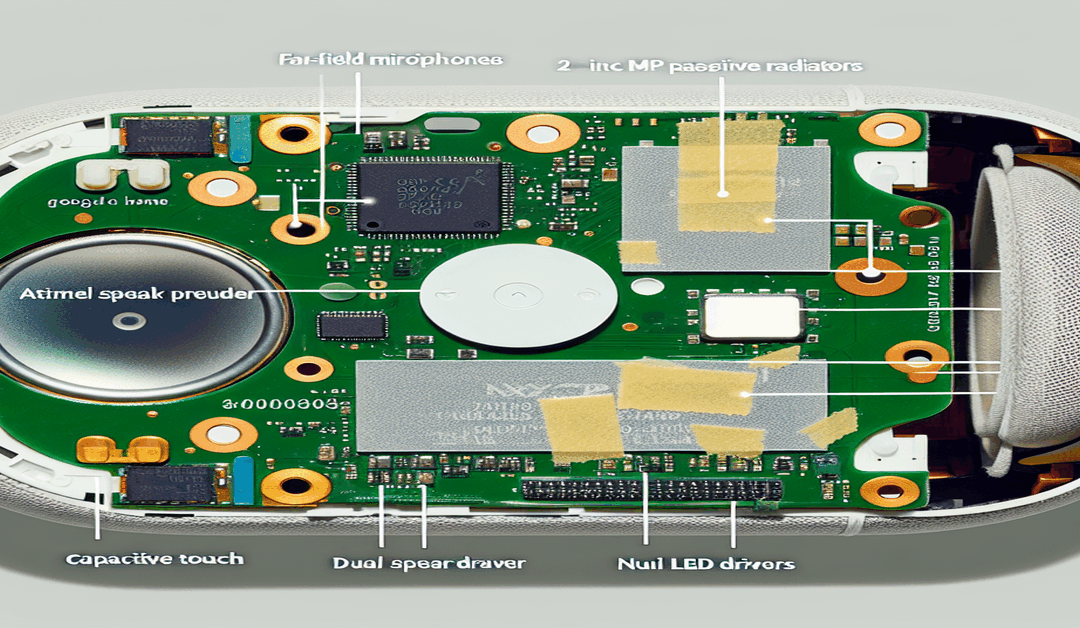Unpacking the Google Home: Disassembly Insights and the Future of Voice Assistants
The Google Home has revolutionized the way we interact with technology in our homes, offering hands-free convenience and intelligent voice assistance. However, as the device continues to evolve and new competitors enter the market, it’s worth taking a closer look at the hardware design and potential friction points of the Google Home. In this post, we’ll explore the insights gained from disassembling the device and discuss the implications for the future of voice assistants.
Inside the Google Home: A Hardware Perspective
When the Google Home is taken apart, it reveals a complex array of **internal components** that work together seamlessly to deliver its impressive functionality. At the heart of the device, you’ll find far-field microphones that allow it to pick up voice commands from across the room, ensuring a responsive and accurate experience. The device also features a robust 2″ speaker driver accompanied by passive radiators, enabling it to deliver clear and powerful audio output. Controlling the vibrant LED array is an Atmel ARM Cortex-M0+ microcontroller, which adds a touch of visual flair to the user interface.
However, disassembling the Google Home is not without its challenges. The device’s construction involves the use of persistent adhesive, securely fastening components like the capacitive touch boards and LED arrays to the casing. This design choice prioritizes durability and longevity but can make the disassembly process more intricate and time-consuming for those seeking to explore its inner workings.
Component Layout and Design Intricacies
A closer examination of the Google Home’s component layout reveals a top-mounted board that houses an array of 12 status LEDs. These LEDs provide visual feedback and enhance the device’s aesthetics, creating an engaging user experience. Driving these LEDs are dual NXP LED drivers, ensuring precise control and vibrant illumination.
The Google Home’s hardware design showcases the careful consideration and engineering expertise that went into its development. From the strategic placement of microphones for optimal voice recognition to the integration of high-quality audio components, every aspect of the device is tailored to deliver a seamless and immersive user experience.
Google Assistant: Friction Points and Potential Improvements
While the Google Home’s hardware is impressive, it’s important to acknowledge some of the friction points associated with the Google Assistant software. One notable concern among users is the potential for battery drain, as the always-listening nature of the device can impact the longevity of connected smartphones or tablets. Additionally, disabling the Google Assistant can be a complex process, often requiring users to navigate through multiple settings menus.
As voice assistants continue to evolve, addressing these friction points will be crucial for improving user satisfaction and adoption. Streamlining the process of managing Assistant settings and providing more transparent battery management options could greatly enhance the user experience.
The Future of Voice Assistants: Gemini and Beyond
The disassembly of the Google Home not only provides insights into its hardware design but also sparks discussions about the future of voice assistants. While the original article mentioned the potential replacement of Google Assistant with Gemini, it’s essential to approach such claims with caution until official announcements or further evidence emerges.
Nevertheless, the voice assistant landscape is rapidly evolving, with new players entering the market and existing platforms continually updating their offerings. As technology advances, we can expect to see even more seamless integration of voice assistants into our daily lives, with improved natural language processing, expanded capabilities, and enhanced privacy features.
Embracing the Voice-Enabled Future
The disassembly of the Google Home offers a fascinating glimpse into the complex hardware that powers our voice-enabled experiences. As we move forward, it’s crucial for both users and developers to stay informed about the latest advancements in voice assistant technology. By understanding the intricacies of these devices and the potential friction points, we can work towards creating a more intuitive and user-friendly future.
Embracing voice assistants means staying curious, exploring new possibilities, and actively participating in shaping their development. Whether you’re a tech enthusiast eager to dive into the hardware details or a casual user looking to optimize your voice assistant experience, staying engaged with the community and providing feedback is essential.
So, let’s continue to unpack the potential of voice assistants, learn from the insights gained through disassembly, and collectively work towards a future where voice-enabled technology seamlessly integrates into our lives, enhancing convenience, productivity, and enjoyment.
#VoiceAssistants #GoogleHome #Disassembly #FutureOfTechnology
-> Original article and inspiration provided by ReviewAgent.ai
-> Connect with one of our AI Strategists today at ReviewAgent.ai

